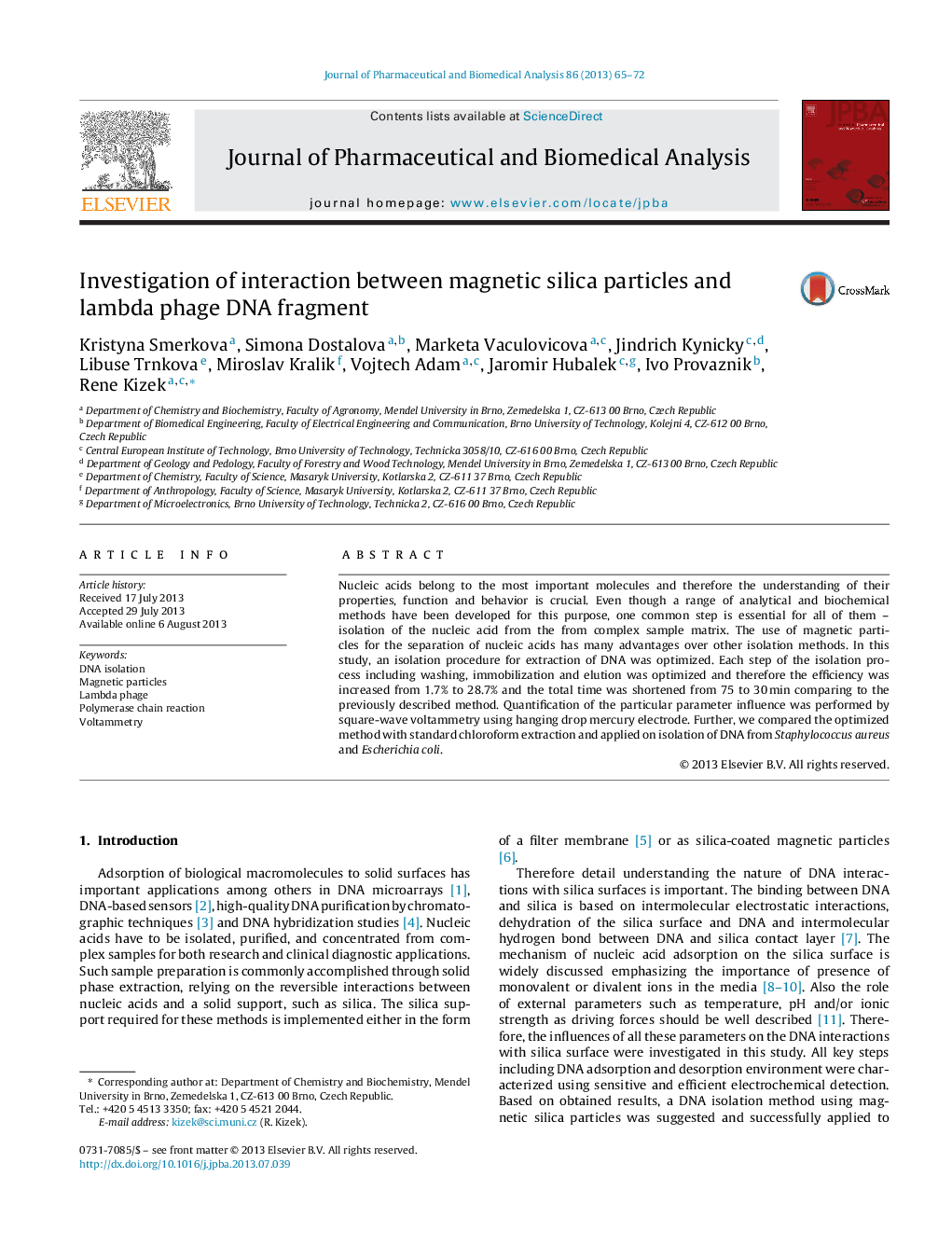| Article ID | Journal | Published Year | Pages | File Type |
|---|---|---|---|---|
| 1221887 | Journal of Pharmaceutical and Biomedical Analysis | 2013 | 8 Pages |
•We optimized an isolation procedure for extraction of DNA from cells.•The optimized method was based on silica-modified paramagnetic microparticles.•The efficiency was increased from 1.7% to 28.7% and the total time was shortened from 75 to 30 min.•DNA from page lambda was used for testing.
Nucleic acids belong to the most important molecules and therefore the understanding of their properties, function and behavior is crucial. Even though a range of analytical and biochemical methods have been developed for this purpose, one common step is essential for all of them – isolation of the nucleic acid from the from complex sample matrix. The use of magnetic particles for the separation of nucleic acids has many advantages over other isolation methods. In this study, an isolation procedure for extraction of DNA was optimized. Each step of the isolation process including washing, immobilization and elution was optimized and therefore the efficiency was increased from 1.7% to 28.7% and the total time was shortened from 75 to 30 min comparing to the previously described method. Quantification of the particular parameter influence was performed by square-wave voltammetry using hanging drop mercury electrode. Further, we compared the optimized method with standard chloroform extraction and applied on isolation of DNA from Staphylococcus aureus and Escherichia coli.
Graphical abstract(A) SEM micrograph of Dynabeads MyOne Silane. (B) Scheme of adsorptive transfer technique: (1) auxiliary electrode; (2) working electrode; (3) reference electrode; (a) sample drop on the parafilm. (b) DNA adsorption on surface of working electrode. (c) washing of working electrode. (d) DNA detection in electrolyte.Figure optionsDownload full-size imageDownload as PowerPoint slide
